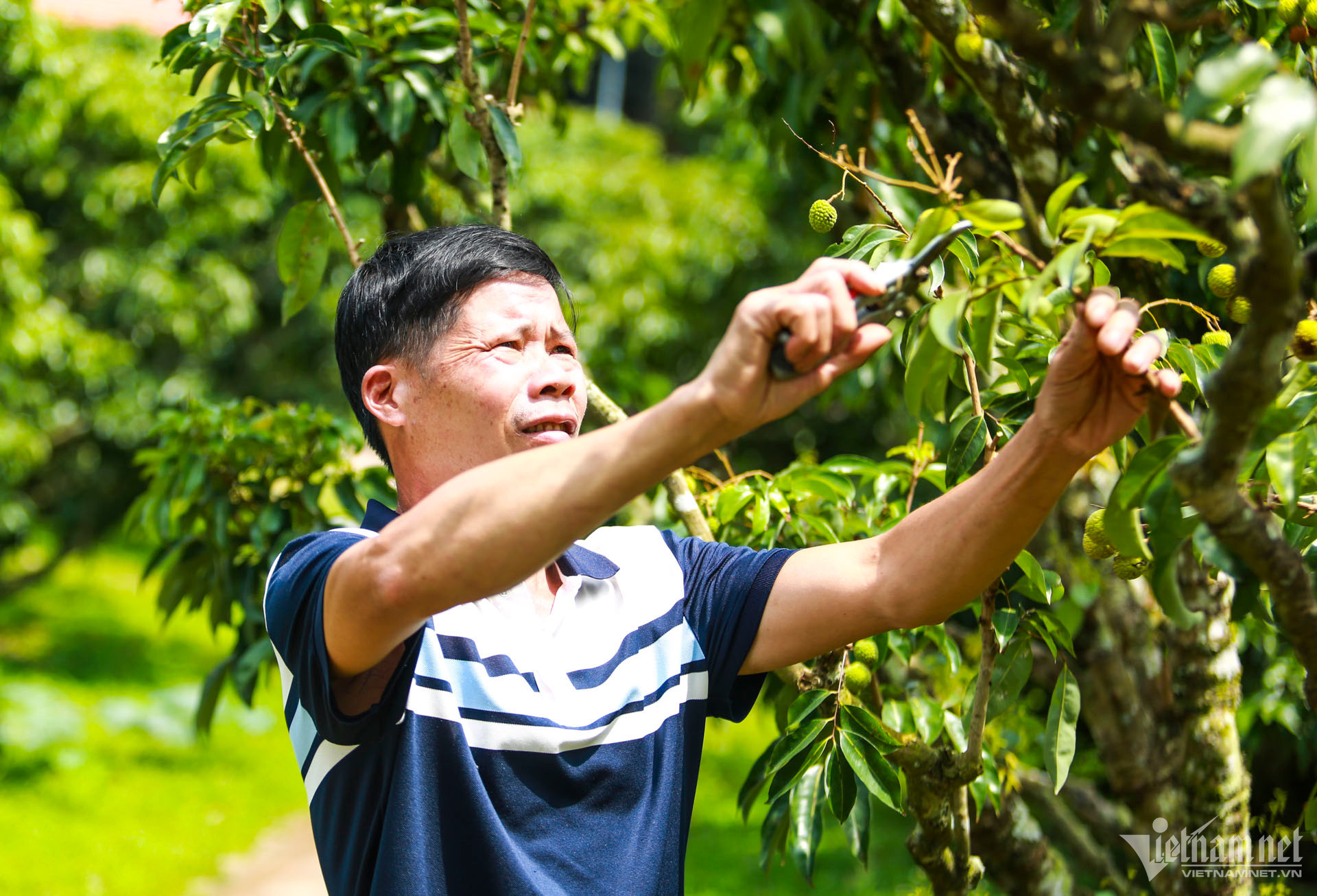
This time last year Ngo Van Hung and his family in Cau Den hamlet were busy harvesting litchis. But they lack work this day, because their 2-hectare area, where litchis are grown under VietGAP and GlobalGAP standards, has a poor crop this year.
“In previous years, with 2 hectares of litchi growing area, the output was high enough to bring turnover of VND200 million. But we suffered a complete loss this year,” Hung said.
Hung attributed the crop failure to abnormal weather conditions.
“It was rainy and cold last December, when litchi trees were blooming,” he explained.
“We have stopped taking care of plants and stopped watering and fertilizing, waiting for the next crop. As trees don't produce fruit, we just clear the grass in the garden. We now focus on raising livestock and growing more crops to have extra income,” he said.
Phung Thi Vinh, a farmer in the same hamlet, who has been growing litchis for 30 years, said she has never seen such a poor crop.
Vinh spent tens of millions of dong on fertilizers and plant protection chemicals to take care of her litchi growing area. However, she had no profit.
“It must be cold enough in winter, and cold spells must come at the right time to give bumper crop,” she explained.
She said litchi trees now need to ‘relax’ before they have a bumper crop the next year.
Price escalation
Dang Van Phu in Chinh hamlet in Hong Giang commune said he was one of the luckiest farmers this year. With 500 litchi trees, Phu plans to harvest and sell litchis from now to the end of June.
Because of a poor crop, litchi prices are high this year. According to Lai Van Thi, a farmer at Kim Market, one of the largest wholesale markets in the province, litchis sold at VND15,000-20,000 per kilogram last year, while they are selling at VND35,000-40,000 per kilogram now.
According to the Luc Ngan district Sub-department of Agriculture and Rural Development, there are 17,360 hectares of litchi growing area in the district which is predicted to produce 50,000 tons this year, or 48,500 tons lower than planned.
The 2023 winter was warmer with the average temperature 1-1.5oC higher than previous years, while there were only one to two severe cold spells. Meanwhile, the rain and humidity affected the growth of trees.
Tam An